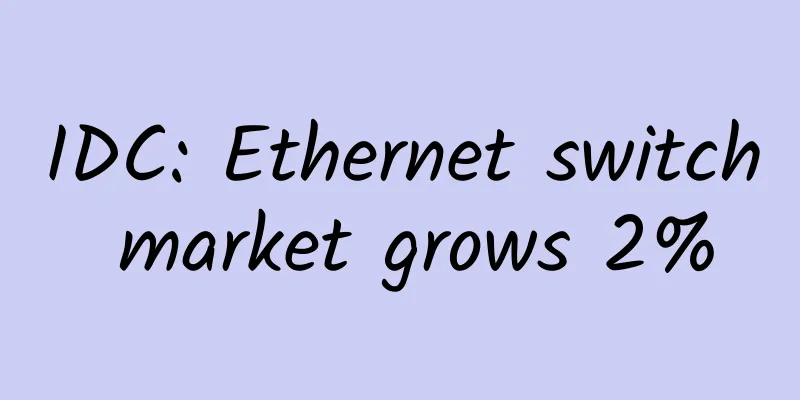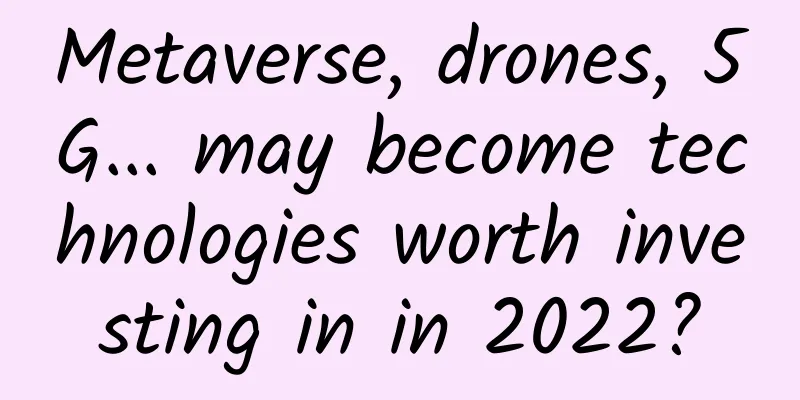5G economy has arrived, and there is no "hidden corner" for industrial innovation

|
The summer of 2020 was a special experience for this generation of students. There was no formal farewell with teachers and classmates, no graduation ceremony, and no graduation photos. Under the epidemic, everyone is practicing social distance.
Although the door of the classroom is temporarily closed, the door of the digital classroom has quietly opened. Distance education has been launched online to respond to the suspension of classes but not learning. According to statistics, in early 2020, the Ministry of Education organized the launch of 22 online course platforms and opened 24,000 online courses. As of the end of April 2020, 1.7 billion students were learning remotely. Online classes also have a novel experience. For example, the famous director David Fincher gave a vivid online class to 450 students of the National Film and Television School of the United Kingdom. The content is not public and can only be seen by online students. This digital experience goes far beyond the classroom. Hospitals, factories, logistics, retail, and thousands of industries are accelerating their digital transformation. The Chinese language paper of the college entrance examination just announced has such an essay title - "Distance and connection in the epidemic" may be the best annotation. The "distance" in the physical world once made us feel that "there is no way out", but the "connection" in the digital world has brought "a new hope". The resilient "5G economy" In physics, there is a term called "toughness", which refers to the ability of a material to absorb energy during plastic deformation and fracture. The better the toughness, the less likely it is to experience brittle fracture. The concept of "resilience" in physics has also been extended to economics, meaning that after economic growth is hit, resilient economies usually have stronger self-recovery and adjustment functions, and can return to the previous growth path more quickly, or reconfigure resources to explore new growth paths. "Economic resilience" emphasizes not only the ability to resist external shocks and recover quickly, but also the ability to adapt to changes after the shock, reallocate resources, adjust industrial structure, and continuously transform and upgrade. Although the physical world is isolated, the digital world is closely connected because of network technology. We are witnessing that the new generation of information technology represented by 5G is giving society this economic resilience. Even 5G itself is benefiting from the resilience brought by technology. On July 3, the second version of the 5G standard, Rel-16, was frozen, and a historic significance came along with it - this is the world's first mobile communication technology standard that was discussed and approved entirely online. The highlight of Rel-16 is "considering the expansion of 5G to vertical industries." Therefore, the judgment that "4G changes life, 5G changes the world" is becoming increasingly clear. Qualcomm President Amon also shared in a recent speech that 5G technology is bringing many benefits to education, health care, social interaction and other aspects. The benefiting industries listed by Anmon are indeed very active in the current situation. In the past six months, "online education" has been unprecedentedly prosperous. According to statistics, as of June 29, an average of 140 new online education-related companies were added every day. In fact, the Ministry of Human Resources and Social Security, together with the State Administration for Market Regulation and the National Bureau of Statistics, announced a related profession called "online learning service provider" at the beginning of this month. Under the epidemic, the medical and health field is another industry where benefits can be seen directly. For example, in many designated quarantine areas, intelligent robots are often busy, connecting people and objects, and achieving zero contact with the epidemic. "Bao Xiaodi" is one of them. Its walking tracks cover many medical institutions such as Wuhan Huoshenshan, Zhengzhou's "Xiaotangshan", Shougang Hospital, Shijingshan Hospital, and Haidian Hospital. In addition to delivery, it also supports report query, intelligent guidance and other tasks. The intelligent brain of "Bao Xiaodi" comes from Qualcomm Snapdragon chips. Qualcomm Amon is very confident that the communications industry can provide support for the medical and health industry, which accounts for nearly 10% of the global GDP, to expand coverage, improve experience and reduce costs. Not to mention the "social entertainment" industry, which is rooted in the mobile Internet. Short video platforms such as Douyin, Kuaishou, and Bilibili are experiencing a carnival of content monetization, and new ways of playing such as live streaming have made traffic equal to revenue. Even the construction of the Huoshenshan and Leishenshan hospitals was broadcast on the People's Daily 5G network live broadcast room, connecting netizens outside the screen and allowing everyone to experience "cloud supervision". ▲ Figure: Qualcomm’s key inventions in Rel-16 IHS's "5G Economy" report predicted that by 2035, 5G will create $12.3 trillion in economic output, accounting for 4.6% of the world's actual total output in 2035. Now it seems that the strong resilience given to the economy by new-generation information technologies such as 5G may make its economic value driving force exceed expectations, just like the speed of network deployment. Millimeter Wave Unleashing the Economic Potential of 5G The completion of Rel-16 is an expansion of the capabilities of the 5G standard. Millimeter wave is the key evolution of the 5G network itself. Qualcomm, which has witnessed the changes in the global communications industry for decades, naturally has a say in this. Amon believes that "millimeter wave can truly unleash the full potential of 5G." The spectrum of 5G includes low-frequency bands, mid-frequency bands and high-frequency bands. Low-frequency and mid-frequency bands can support the "balance" between network coverage, capacity and performance. High-frequency millimeter waves can fully unleash the "full potential" of 5G performance, capacity and throughput, especially it can provide the ability to seamlessly connect to the cloud and promote innovation in more industries. Operators have seen the advantages of millimeter waves, and more than 120 operators have invested in millimeter waves. As operators begin to deploy millimeter waves, ordinary users can already enjoy related services. As shown in the figure below, a user's speed test data using Ookla shows that the peak rate of millimeter waves exceeds 2Gbps, and the average download rate is 4 times that of the frequency band below 6GHz. Speaking of these numbers, Amon expressed "excitement" more than once. However, the development of any new technology is certainly not all good. 5G has its Achilles heel, and the deployment of millimeter waves also faces many challenges. Qualcomm acts as the "Uncle Sam" behind the challenges. The first challenge of millimeter waves is "coverage". It seems that millimeter waves will naturally cause signals to exist in "hidden corners". However, academics and industry leaders are actively exploring solutions, and Qualcomm has achieved good results. Ji Tingfang, senior director of engineering technology at Qualcomm, introduced that "Qualcomm's beamforming technology can achieve millimeter wave transmission over 150 meters. This technology has not only passed simulation experiments, but has also been verified in field tests." The second challenge is whether it is possible to go beyond line-of-sight transmission and fixed transmission. There has also been progress in this regard. In 5G design, there are physical layer signals that can support rapid adjustment and switching of nearby beams, and can make good use of multipath and reflection. This means that if the signal is blocked, another module on the phone can quickly find a new transmission path. This conversion is extended from within the base station to between different base stations, ensuring that millimeter wave signals can be transmitted stably and at high speed in very challenging environments. The third challenge comes from the "terminal". Can the millimeter wave terminal be easily portable? Qualcomm's solution has proved that its millimeter wave module can not only meet power consumption requirements and provide maximum performance, but also achieve the compact and slim design requirements of smartphones. In February this year, Qualcomm conducted 5G millimeter wave OTA field tests in San Diego, USA. In order to verify the performance of the millimeter wave modem, Qualcomm placed the mobile phone in a very challenging environment, such as a scene with a large flow of people and blocked by crowds. Another extreme test environment is to fix the mobile phone on a drone and remotely control the drone to fly around the park. Thanks to Qualcomm's beam management algorithm, the mobile phone can still maintain a high-speed network connection even in the above challenging environments. ▲ Figure: As shown in the figure, Qualcomm began to deploy 4 gNodeB base stations in the urban area of Frankfurt, Germany, and then added 15 IAB nodes. These nodes have no Internet connection, but use millimeter wave small base stations for signal backhaul. The results show that such millimeter wave deployment increases network throughput by 3.4 times. Through simulation tests of node algorithms in Rel-16 and future versions, the terminal can save 37% of power. Almost at the same time, Qualcomm released the third-generation 5G modem Snapdragon X60. The system with millimeter wave antenna module can achieve a maximum download speed of 7.5Gbps and an upload speed of 3Gbps. As the first solution to support the aggregation of millimeter wave and sub-6GHz frequency bands, Snapdragon X60 enables operators to make full use of all available spectrum resources, allowing 5G wireless networks to provide fiber-like network speeds and low-latency services. The feature of Rel-16 "expanding 5G to new vertical fields" allows 5G applications to evolve from "enhanced mobile broadband" to "industry and business-critical use cases that support new key functions." For example, advanced technologies in the automotive industry such as ultra-reliable communications and 5G V2X (5G vehicle networking). The high speed and low latency characteristics of millimeter waves can not only support cloud gaming or cloud computing, but also meet the extremely high low latency requirements of industrial Internet of Things applications, promoting productivity changes. Every evolution of standards and technology is a release of the potential of the 5G economy, and this pace will not stop. The subsequent standards and specifications of 5G are on the way. Ji Tingfang revealed that the next specification of 5G standard, Rel-17, is currently only in the initial stage and will introduce low-complexity NR-Light to support 5G applications in small terminals such as smart watches, sensors in smart cities, water meters, electricity meters and more new scenarios. 5G global ecosystem and China's 5G highlights Standard iteration requires ecological collaboration. Mobile communications itself is of course a global industry. No company can complete all the work alone. Entering the 5G era, from standards to deployment, from the industrial value chain to the ecosystem, each link is linked together and cooperation is win-win. Over the past few years, Chinese smartphone manufacturers have occupied 7 seats in the top 10 list of the global smartphone market. IHS wrote the following judgment in the report: Compared with foreign brands, Chinese brands have obvious advantages in terms of time to market, variety and quantity, and technological innovation. Therefore, Chinese mobile phone brands have already stood in the "first echelon". Qualcomm is both a witness and achiever of these "highlight moments" of Chinese smartphone manufacturers. Amon recently once again affirmed the power of China's ecosystem. He said, "China's ecosystem is crucial to achieving the goal of enjoying 5G for all." In the category of 5G mobile phones made in China, all product levels and price points can be achieved. Currently, the 5G commercial terminals launched by operators in the United States, Europe, Australia and Asia are all from Chinese brands such as OPPO, vivo, and Xiaomi. Qualcomm is also proud of these Chinese halos. Amon couldn't help but sigh: "Our responsibility is to provide the world's most advanced 5G solutions to excellent partners and support them to compete, innovate and grow in the global mobile industry." In the entire 5G deployment, the network is half important, and the other half is the terminal. According to GSA data, there are more than 100 5G terminals on the market for consumers to choose from, including a variety of smartphones. Qualcomm launched the Snapdragon 690 5G SoC last month, which, together with the previously launched Snapdragon 8 and 7 series flagship and high-end 5G SoCs, jointly promoted the popularity of 5G mobile phones. It is reported that more than 375 terminals using Qualcomm Snapdragon 5G solutions have been released or are being designed. Qualcomm's 5G solutions are not limited to smartphones. Currently, there are CPE for fixed broadband, modules for industry applications, as well as mobile hotspots, tablets and even PCs. Qualcomm believes that in the next year, 5G will enable connected cars, various IoT terminals and more different types of terminals. Therefore, Qualcomm will continue to promote the integration of 5G with other industries in the future. "All phased deployment work is ultimately aimed at making '5G for All' a reality and helping us build a more resilient world," said Amon. To some extent, the "social isolation" brought about by the epidemic has become a catalyst for digital transformation. According to relevant surveys, 84% of organizations will consider continuing to implement partial home office or remote office. 5G terminals and 5G networks will undoubtedly need to play a more important role, and IT infrastructure that is completely based on the cloud will become the norm. Anmon feels that "people are beginning to rethink the relationship between physical space and digital space. Perhaps the introduction of virtual reality in holographic remote presentation is more in line with the preferences of emerging professional groups for the new digital economy." Mark Granovetter, the founder of new economic sociology, once said: All economic behaviors are embedded in social networks. In the past, communication technology changed the social network between people. In the future, communication technology will create a new social network between people and everything. After crossing the threshold of millimeter wave, we no longer have to worry about the "hidden corners" of 5G signals. Entering the fast lane of digital economy, industrial innovation will not have "hidden corners". We will witness the integration of 5G into thousands of industries and witness the new wave of industries brought by the resilient 5G economy. |
Recommend
Analysis of the advantages and disadvantages of the six categories of wireless connection technologies for the Internet of Things
IoT applications have penetrated into our lives, ...
10gbiz: Hong Kong/Los Angeles VPS 60% off from $2.76/month, CN2 GIA line, Hong Kong dedicated server first month from $36.57
I received an October promotion from 10gbiz, offe...
5G optical fiber product network construction requirements
5G is a leading technology in the new generation ...
A US court ruling to suspend the implementation of the TikTok delisting incident
US court rules to temporarily suspend TikTok'...
The Ministry of Industry and Information Technology has implemented new measures to promote the accelerated development of 5G and accelerate the construction of the new economic form of "5G+".
my country's 5G development has once again re...
Eight excellent open source intranet penetration tools
Intranet penetration (NAT penetration) is a techn...
PacificRack: Unlimited KVM in Los Angeles starting at $1.50 a month or $15 a year
PacificRack has launched new products. The word &...
A brief analysis of the 5G market breakthrough and development path of China's radio and television industry
[[405869]] As we all know, in the past three or f...
Expert: It is impossible for the United States to bypass 5G and develop 6G
On September 21, at the opening event of Sina 5G ...
Sent a data packet to xxxhub and found...
[[442879]] Hello everyone, I am Xuanyuan. That da...
Spiderpool: How to solve the problem of zombie IP recycling
In the Underlay network, how to recycle zombie IP...
The impact of drone technology and use cases
Before we dive into the ways drones can make the ...
HPE Aruba Networking Launches Next-Generation Wi-Fi 7 Access Points to Help Enterprises Address Security, AI and IoT Challenges
HOUSTON - April 23, 2024 - Hewlett Packard Enterp...
EMR on ACK is newly released to help enterprises efficiently build big data platforms
Alibaba Cloud EMR on ACK provides users with a ne...

![[11.11] RackNerd: $11.11/year - 1.11GB/11GB/3TB/San Jose and other data centers](/upload/images/67cac04b8f2b4.webp)





![[Closed] Arkecx 40% off, Hong Kong/Taiwan/Japan/Korea/USA etc. starting from $72/year](/upload/images/67cabfe4197bd.webp)

